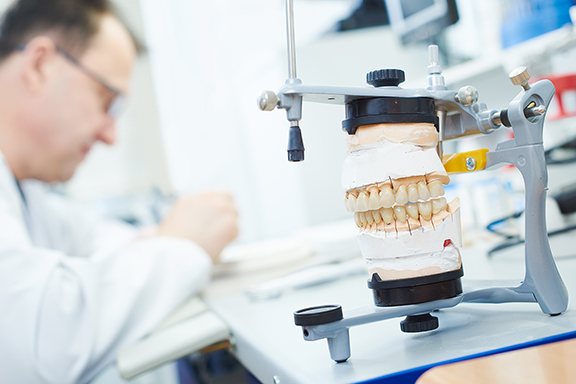 By Alexander Germanis
By Alexander Germanis
Following any great disaster, whether it is a tornado, a fire, or an all-out war, there comes a time of restoration. In fact, immediately following the devastation of the American Civil War came a period actually known as the Reconstruction Era.
We have an inner need for things to be whole or complete. Whether to satisfy aesthetics or to simply return something to its proper function, restoration and reconstruction are hobbies for many and professions for many more.
The oral and maxillofacial surgeons at Doran, Capodice, Efaw, and Ocheltree, LLC, are those who fit the latter description. They will be the first to say, in this era of dentistry, reconstruction and restoration have never been so advanced.
“We oral surgeons can reconstruct people post-cancer, post-trauma, after an injury, if they get their teeth knocked out in a softball game, or whatever,” says Stephen Doran, DMD. “With these dental implants, we can now replace teeth with almost 100-percent function most of the time.”
“That is, for me, the best part — being able to reconstruct somebody,” Dr. Doran continues. “The cosmetics are all nice, but being able to reconstruct after an injury or cancer — that’s the place I get the most satisfaction placing the implants, and they work.”
Oral cancers can be quite devastating on an individual’s face, often resulting in entire sections of the jaw or skull needing to be removed surgically, but cancer is not always the culprit when it comes to bone loss. Bone has a tendency to reabsorb itself if it is not subjected to normal stresses and pressure. It is why astronauts start to lose bone mass when they have been in space too long.
In the jaw, once a person loses teeth, the bone in that area starts to reabsorb, resulting in reduced bone mass and the bone thickness necessary to place implants.
Thomas Ocheltree, DMD, explains how reconstruction technology means that is not the end of the fight, however. “Sometimes, we need to make the determination if the patient needs some pre-implant bone grafting procedures. But first, we get a CT scan, we get together with the lab tech and determine if we can get the implants in a patient’s mouth without having to do the secondary procedure.”
Should bone grafting be necessary to begin restoration, says David Efaw, MD, DDS, there are now numerous ways in which to farm that bone, so to speak. “One way is we use the patient’s own bone,” he begins. “If we’re creating an implant site, we can take the bone from that area and mix it with other materials to get volume of bone.”
“There are also products created in a lab called bone morphogenic proteins,” he continues, “and they call bone in to grow in the area.”
Any time a new piece of technology comes down the pike, there are always concerns regarding safety, something, says Jack Capodice, Jr. MD, DMD, oral and maxillofacial surgeons try to deliver with a very high margin. “We deal with patient fears all the time and to alleviate those fears and accomplish the surgical procedure is sometimes a challenge,” he says. “Having the ability to sedate patients, treat them in a comfortable manner, alleviate anxiety, and help them with their concerns regarding their fears is a huge benefit to the service we provide also.”
For those of us who have experienced some sort of devastation in our lives, it is heartening to know there is a chance for restoration. In dentistry, we have entered an unprecedented era of reconstruction — one in which the chances of being made whole again have never been better or safer.
If you missed the previous articles in this series, you may read them online at www.HealthyCellsBN.com or contact Cheryl at 309-664-2524 or Ceash7@gmail.com. To learn more about dental implants, their origin and evolution, read future installments of “Changing the Face of Dentistry” in upcoming issues of Healthy Cells Magazine.
Drs. Doran, Capodice, Efaw and Ocheltree provide a full scope of oral and maxillofacial surgery with expertise ranging from wisdom tooth removal and dental implants to bone grafting procedures, corrective jaw surgery, and cosmetic facial surgery. Their office is located at 109 Regency Dr. in Bloomington. For more information, you may call 309-663-2526 or visit them online at
www.dceooms.com.

